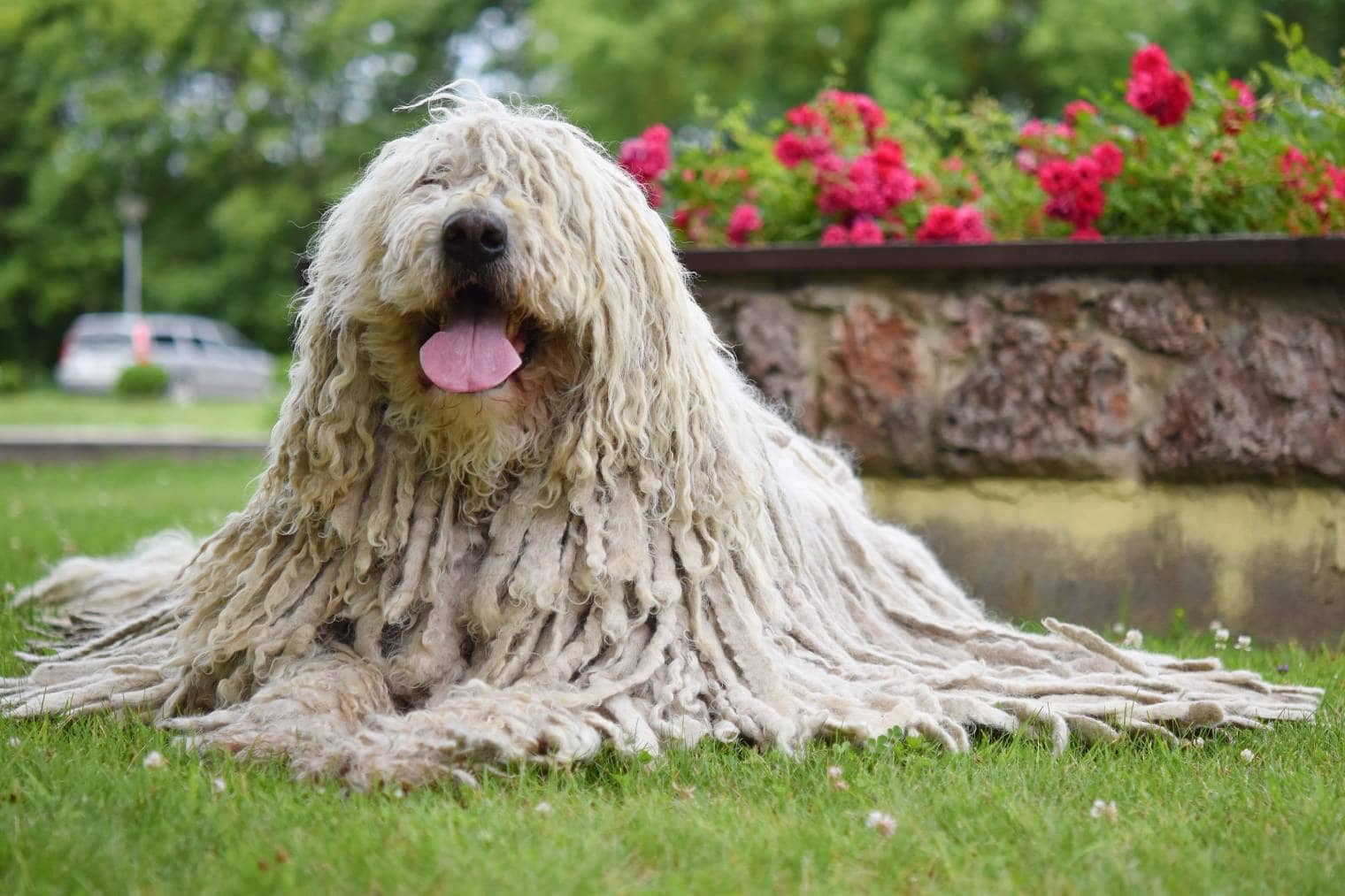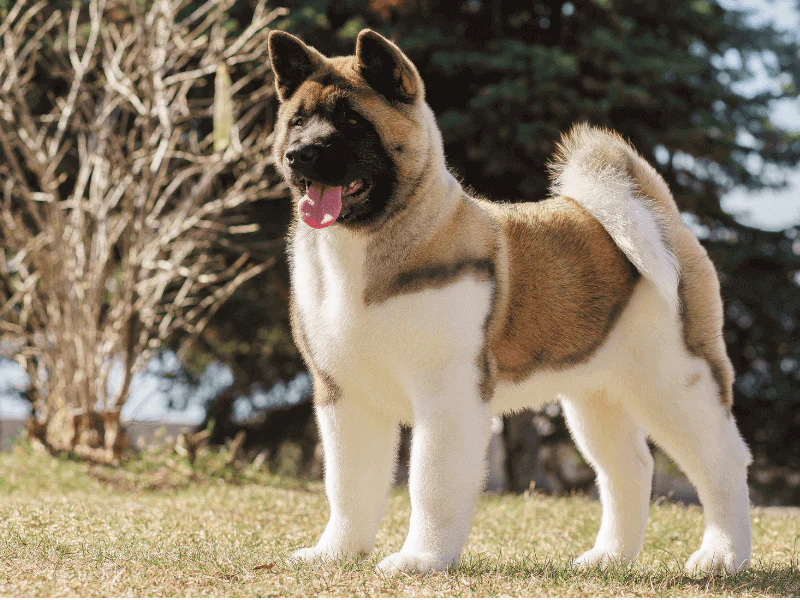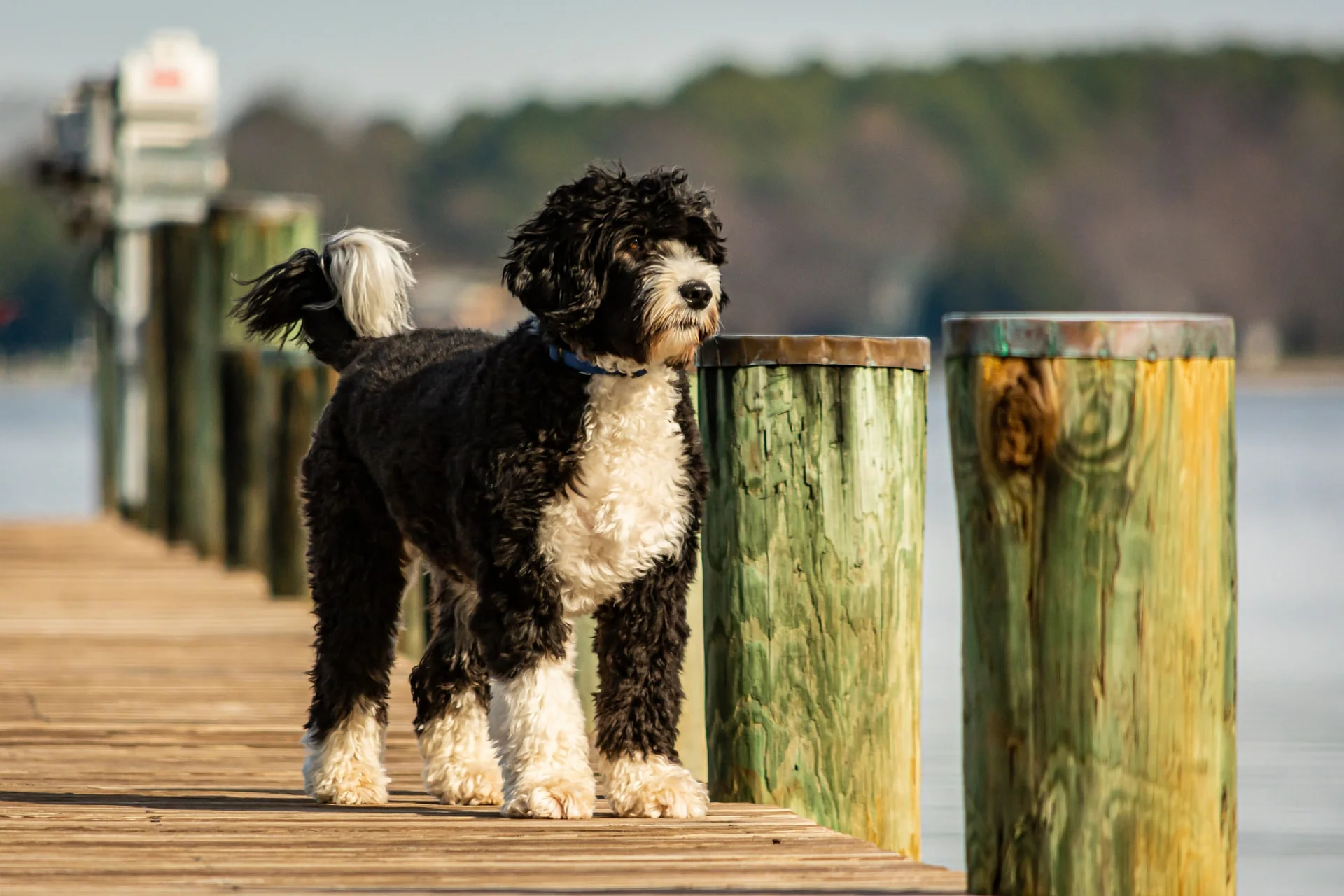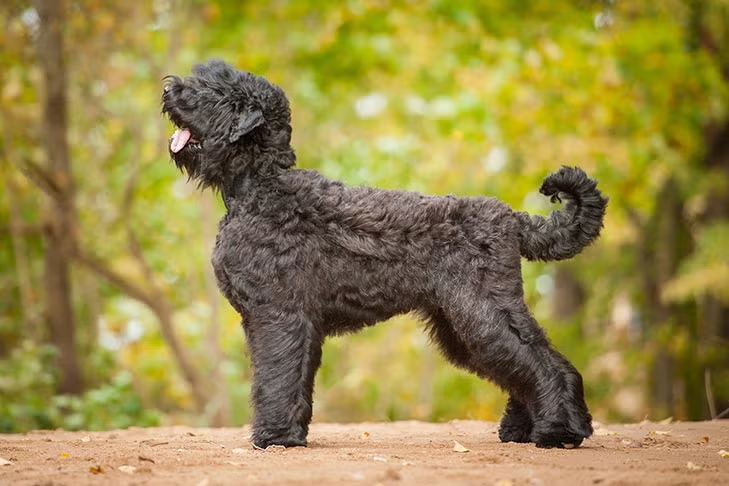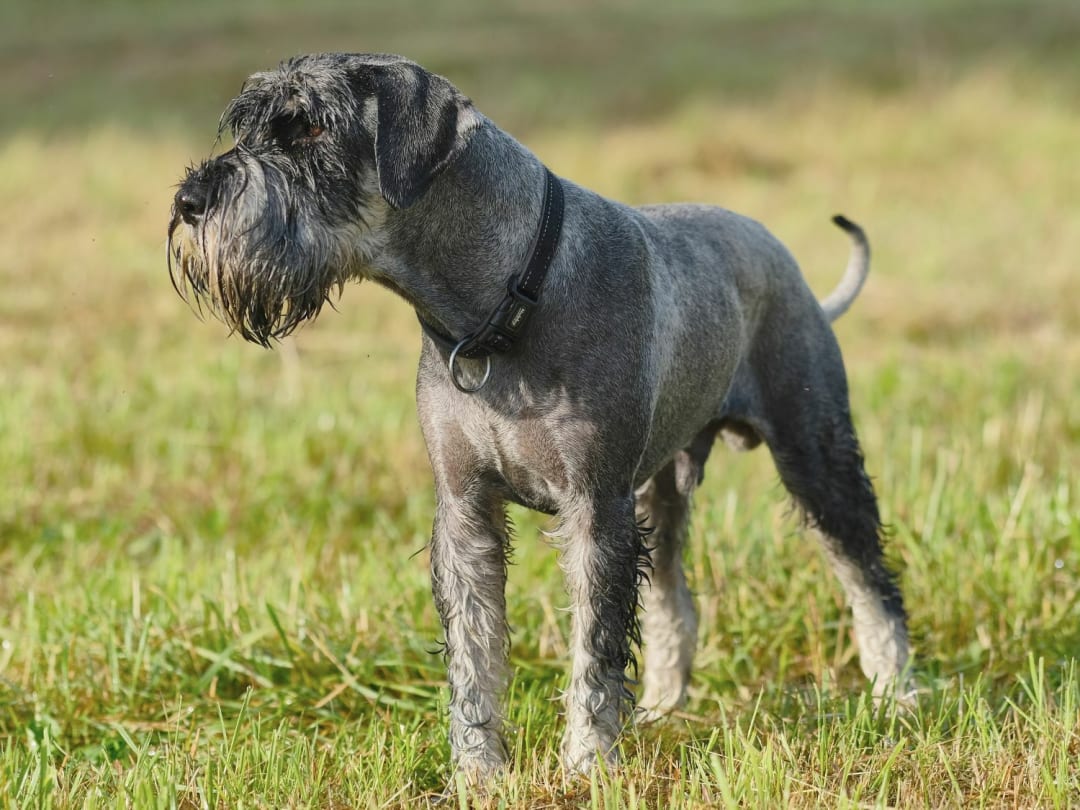Meet the Komondor – The Living Mop with a Guardian’s Heart
The first time I saw a Komondor in real life, I literally stopped in my tracks. There, padding across the grass at a dog show, was what looked like an animated mop come to life—a massive, white-corded creature that moved with surprising grace despite looking like it belonged more in a janitor’s closet than at a canine competition.
This distinctive Hungarian guardian breed has been turning heads for centuries, and it’s not hard to see why. With their incredible corded coat that can reach the ground when fully grown, Komondorok (yes, that’s the correct plural!) are one of the most visually striking dog breeds on the planet. But there’s so much more to these dogs than their unusual appearance.
Behind those distinctive dreadlocks lies an ancient guardian breed with a fierce protective instinct, remarkable intelligence, and unwavering loyalty. As someone who’s researched countless dog breeds over the years, I’ve developed a fascination with these rare and remarkable dogs that once protected sheep from wolves on the Hungarian plains and now serve as devoted, if uncommon, family companions.
If you’re intrigued by these unique canines or considering bringing one into your home, buckle up! This guide will take you behind the cords to reveal everything you need to know about the magnificent Komondor.
Ancient History: From Nomadic Guardian to Modern Protector
The Komondor’s history is as rich and textured as its distinctive coat, stretching back through centuries of guardianship on the Hungarian plains.
Origins in the East
While the Komondor is considered a Hungarian breed, its origins likely trace back much further east. Historical research suggests the breed descended from Tibetan dogs, possibly related to the Tibetan Mastiff, and was brought to Hungary around the 9th century by the nomadic Cumans, a Turkic people who migrated from the East.
The name “Komondor” itself is believed to derive from “Koman-dor,” meaning “dog of the Cumans.” Archaeological evidence supports this theory, as researchers have found remains of Komondor-like dogs at gravesites of Cuman settlers.
When the Cumans fled to Hungary in the 13th century after the Mongol invasion, they brought these dogs with them. Over time, the Komondor became an integral part of Hungarian pastoral life, establishing itself as a vital guardian of the vast sheep flocks on the Hungarian plains known as the Puszta.
Purpose and Working Role
The Komondor was developed for a very specific purpose: to guard livestock, particularly sheep, from predators like wolves and bears, as well as from human thieves. Unlike herding breeds that move livestock from place to place, the Komondor’s job was purely protective.
These dogs would live among the sheep, often without human direction for extended periods. Their remarkable white coat served a dual purpose—it helped them blend in with the sheep they were guarding, allowing them to surprise predators, and it protected them from harsh weather and the bites of attackers.
The Komondor’s independent nature developed from this working environment. Left alone to make critical decisions about when and how to protect their flock, they evolved into self-reliant dogs with excellent judgment and the courage to fight off even the most dangerous predators.
Modern History
The breed gained international recognition in the early 20th century, though World War II almost led to its extinction as many dogs were killed during the conflict. Dedicated breeders, particularly in Hungary, worked to restore the Komondor population after the war.
The American Kennel Club recognized the Komondor in 1937, though they remain relatively rare in the United States compared to more popular breeds. Today, while still occasionally used as livestock guardians, most Komondorok serve as family companions and property guardians, where their protective instincts and impressive appearance continue to make them effective deterrents to unwanted visitors.
Unmistakable Appearance: The Living Mop
There’s no mistaking a Komondor for any other breed—their distinctive appearance has earned them nicknames like “mop dog” and “Hungarian sheepdog.” Let’s examine the unique physical characteristics that make this breed so remarkable:
Size and Build
The Komondor is a large, powerful breed with substantial bone and muscle. Males typically stand at least 27.5 inches tall at the shoulder and weigh 100 pounds or more, while females stand at least 25.5 inches and weigh 80 pounds or more. Despite their bulk, they move with surprising agility and lightness—a necessity for a dog that needed to protect flocks from swift predators.
Underneath all those cords is a powerfully built dog with a solid frame, deep chest, and strong musculature. The overall impression is one of strength and power rather than refinement.
That Extraordinary Coat
The Komondor’s most distinctive feature is, of course, its extraordinary corded coat. This unique covering doesn’t start out corded—Komondor puppies are born with a soft, curly, white coat. As they mature, the curly outer coat combines with the softer undercoat to naturally form cords that lengthen throughout the dog’s life.
By the time a Komondor reaches about two years of age, the cords should be well-formed. If allowed to grow without trimming, these cords can eventually reach the ground and beyond, though many pet owners choose to keep them trimmed to a more manageable length.
The coat’s color is white, though puppies may have cream or buff shadings that typically fade to white as they mature. The white color served a practical purpose—it helped the dogs blend in with the sheep they guarded, making them less visible to predators until they sprang into action.
Facial Features
Under all that hair is a large, powerful head with a somewhat short muzzle. The Komondor has almond-shaped eyes that are dark brown in color, though they’re often obscured by the cords that hang over them. Their ears are an elongated triangle shape with rounded tips, hanging down and covered by the corded coat.
The overall expression, when you can see it through the cords, is one of alert watchfulness—a reflection of their guardian heritage.
Movement and Presence
Despite their heavy coat, Komondorok move with surprising grace and agility. They have a light-footed gait with a long stride that covers ground efficiently—essential for a dog that might need to quickly intercept a threat to its flock.
There’s an unmistakable dignity and presence to a mature Komondor. They exude a quiet confidence and watchfulness that speaks to their centuries of independent guardianship.
Temperament: The Independent Guardian
The Komondor’s temperament is as distinctive as its appearance, shaped by centuries of working as an independent livestock guardian. Understanding these deeply ingrained traits is essential for anyone considering this unusual breed.
Protective Instincts
First and foremost, the Komondor is a guardian. Centuries of breeding have hardwired protective instincts into these dogs, who were expected to defend their flocks against wolves and other predators without human direction. This protective nature extends to their human families, making them excellent watchdogs.
However, this protective instinct comes with significant responsibility. Komondorok can be suspicious of strangers and may act defensively if they perceive a threat to their family or territory. Without proper socialization and training, this protective nature can become problematic, potentially leading to aggression toward visitors or people the dog perceives as threatening.
A well-socialized Komondor should be discerning rather than indiscriminately aggressive—alert and watchful with strangers but not hostile without cause.
Independence and Intelligence
Komondorok were bred to work independently, making critical decisions about protecting their flocks without human guidance. This history has produced a highly intelligent but also independently minded dog that thinks for itself.
This independence can make training challenging. While intelligent and capable of learning commands, Komondorok may question why they should follow certain directives, especially if they don’t see the point. They’re not natural people-pleasers like some breeds, and training requires patience, consistency, and an understanding of their independent nature.
Their intelligence makes them excellent problem-solvers, but this can sometimes translate to finding creative ways around rules or barriers that their owners have established.
Family Bonds
With their families, Komondorok can be deeply devoted and affectionate. They typically form strong bonds with their owners and can be gentle and patient with family members, including children—though supervision is always recommended with any large dog and small children.
They often maintain a certain dignity and independence even with their loved ones. This isn’t a breed that typically follows their owners from room to room or constantly seeks attention and affection, though they do enjoy spending time with their family.
When not working (or perceiving a need to be on guard), Komondorok can be surprisingly low-energy indoors. Many are content to lounge for hours, watching over their domain with a calm, quiet presence.
Interaction with Other Animals
The Komondor’s relationship with other animals is complex and depends largely on early socialization. While they were bred to protect livestock, not harm them, they can be territorial with other dogs, particularly those of the same sex or those they perceive as challenging their authority.
Early and thorough socialization is essential if a Komondor is expected to interact peacefully with other pets. Many can learn to accept the family cat or other household pets as part of their “flock” to be protected, but interactions with unfamiliar animals should be carefully managed.
Their protective nature often makes dog parks and off-leash areas with unfamiliar dogs unsuitable environments for most Komondorok.
Health and Lifespan: Robust but Not Without Concerns
Komondorok are generally healthy dogs with good longevity for their size, but like all breeds, they can be prone to certain health conditions. Understanding these potential issues is important for providing the best care and ensuring your Komondor lives a long, healthy life.
Lifespan
The average lifespan of a Komondor is approximately 10-12 years, which is relatively good for a large breed. Many factors can influence longevity, including genetics, diet, exercise, and preventative healthcare.
Working with a reputable breeder who conducts appropriate health testing can help stack the odds in favor of a longer, healthier life for your Komondor.
Common Health Concerns
While Komondorok are generally robust, they can be prone to certain conditions:
- Hip and Elbow Dysplasia: These developmental conditions affect the joints and can lead to arthritis and mobility issues. Responsible breeders screen breeding stock for these conditions.
- Bloat (Gastric Dilatation-Volvulus): This potentially life-threatening condition occurs when the stomach fills with gas and twists. Large, deep-chested breeds like the Komondor are at higher risk. Symptoms include a distended abdomen, unproductive retching, and signs of pain. Immediate emergency veterinary care is necessary.
- Eye Problems: Komondorok can be prone to various eye issues, including entropion (inward-turning eyelids) and cataracts. Regular eye examinations are recommended.
- Skin Issues: The unique coat can hide skin problems, making regular checks important. Hot spots, allergies, and other skin conditions can develop, particularly if the coat isn’t properly maintained.
While these conditions may sound concerning, many Komondorok live their entire lives without experiencing serious health problems. Responsible breeding practices and regular veterinary care can help minimize the risk of these issues.
Preventative Care
To help ensure your Komondor lives a long, healthy life:
- Schedule regular veterinary check-ups, ideally twice yearly for adult dogs
- Maintain a healthy weight through proper diet and exercise
- Consider feeding smaller, more frequent meals to reduce the risk of bloat
- Conduct regular skin checks beneath the cords to catch any issues early
- Provide regular dental care, including tooth brushing
- Ensure they receive appropriate vaccinations and parasite prevention
When considering a Komondor puppy, work with a breeder who conducts health testing on their breeding stock, including hip and elbow evaluations and eye certifications.
Living With a Komondor: Day-to-Day Care
Before bringing a Komondor into your home, it’s important to understand what daily life with these unique dogs entails. Their distinctive coat, protective nature, and specific needs require dedicated owners willing to meet these requirements.
That Incredible Coat: Grooming Challenges
Let’s address the elephant—or rather, the mop—in the room first. The Komondor’s corded coat is undeniably striking, but it comes with significant maintenance requirements:
- Cord Formation: The cords don’t form entirely on their own. As the puppy coat transitions to adult cords (usually starting around 8-10 months), the cords need to be manually separated to prevent matting. This involves carefully pulling apart the forming cords from the skin outward.
- Regular Maintenance: Once formed, cords need regular checking and separation, particularly at the roots. This isn’t a quick process—expect to spend several hours every month on cord maintenance.
- Bathing Challenges: Bathing a Komondor is a major undertaking. The corded coat acts like a sponge, absorbing large amounts of water and taking many hours (sometimes days) to dry completely. Powerful fans or dog-specific dryers are essential tools for Komondor owners.
- Cleanliness Concerns: The cords can pick up debris, dirt, food, and various outdoor materials. Regular inspection and cleaning are necessary to keep the coat from becoming soiled or smelly.
- Parasites: The thick coat can hide fleas, ticks, or skin issues. Regular checks are essential to catch and address these problems early.
Many Komondor owners choose to keep their dogs’ cords trimmed to a more manageable length, particularly when they’re not being shown. Even with trimming, however, the coat requires significant time and attention.
Exercise and Space Requirements
Despite their working heritage, adult Komondorok often have moderate exercise needs:
- Daily walks totaling about 60 minutes of exercise
- Access to a securely fenced yard for free movement and exploration
- Mental stimulation through training or puzzle toys
While puppies and young dogs may have higher energy levels, mature Komondorok are often relatively calm indoors. When not “on duty,” many are content to lounge and observe their surroundings with quiet vigilance. However, they still need regular exercise to maintain physical and mental health.
The ideal environment for a Komondor is a home with plenty of space and secure fencing. While they can adapt to smaller living spaces, including apartments, this requires a commitment to regular exercise outside the home.
Their thick coat makes them better suited to cooler climates. In hot weather, exercise should be limited to cooler parts of the day, and access to shade and fresh water is essential.
Training and Socialization: Essential and Challenging
The Komondor’s independent nature and protective instincts make early, thorough training and socialization absolutely essential:
- Early Socialization: Expose your Komondor puppy to a wide variety of people, places, and situations from an early age. This helps them learn to distinguish between normal situations and genuine threats.
- Consistent Training: Use firm, consistent, positive methods. Harsh corrections typically backfire with this sensitive but independent breed.
- Establish Leadership: Komondorok respect confident, consistent leadership. Without it, they may make their own decisions about what constitutes a threat.
- Ongoing Management: Even with excellent training, mature Komondorok may need management around strangers or in unfamiliar situations. Their protective instincts remain strong.
The time invested in training and socialization pays enormous dividends in having a well-adjusted Komondor who can distinguish between genuine threats and normal situations. Without this foundation, their protective nature can become problematic.
Family Dynamics
Komondorok can be wonderful family dogs in the right homes, but several factors should be considered:
- Children: Well-socialized Komondorok can be gentle and protective with children in their family. However, supervision is essential, both because of the dog’s size and protective nature and because children should be taught to respect the dog’s boundaries.
- Visitors: The Komondor’s natural suspicion of strangers means visitors to your home should be properly introduced. Even with socialization, many Komondorok remain somewhat reserved with people outside their immediate family.
- Household Activity: These dogs generally prefer a relatively calm, predictable household environment. They can become stressed in chaotic situations or with constant comings and goings of unfamiliar people.
A Komondor is not just a pet but a lifestyle commitment. Their protective nature, substantial size, and specific care needs mean they’re best suited to dedicated owners who understand and appreciate these aspects of the breed.
Is a Komondor Right for You?
After learning about the unique characteristics, needs, and challenges of the Komondor, you might be wondering if this unusual breed would be a good fit for your lifestyle. Here’s a candid assessment of who might—and might not—be well-matched with a Komondor:
You Might Be a Good Komondor Owner If:
- You have experience with large, independent breeds: If you understand the needs and challenges of powerful working dogs
- You have a securely fenced property: Providing space for safe exploration and exercise
- You’re willing to commit to extensive coat care: Including regular cord maintenance and challenging bathing sessions
- You’re home frequently: Allowing time to build a strong bond and provide necessary training
- You have few visitors or a predictable household: Minimizing potential protective challenges
- You’re committed to thorough socialization and training: Essential for a well-adjusted Komondor
- You appreciate a somewhat independent companion: Rather than a dog that constantly seeks attention
This Might Not Be Your Breed If:
- You’re a first-time dog owner: The Komondor’s size and independence make them challenging for novices
- You live in an apartment or small home: Without a substantial commitment to exercise and management
- You have frequent visitors or an active social life at home: Creating constant challenges for a protective dog
- You’re away from home for long hours: Limiting your ability to train and socialize properly
- You’re not prepared for extensive grooming: The coat maintenance is non-negotiable
- You live in a very hot climate: Their heavy coat makes heat tolerance poor
- You want a dog for the dog park or off-leash areas: Their protective nature often makes these environments unsuitable
Finding a Komondor
If you decide a Komondor is right for your family, here are your main options:
Reputable Breeders: The Komondor Club of America can help connect you with responsible breeders. Expect to pay between $1,500-$2,500 for a well-bred puppy from health-tested parents, and be prepared for a waiting list, as they’re not commonly bred.
Rescue Organizations: While rare in rescue, Komondorok do occasionally need rehoming. Rescue dogs may come with established behaviors (both positive and challenging) but can make wonderful companions for experienced owners willing to work through any issues.
Whichever route you choose, take time to research thoroughly and ensure you’re working with ethical sources that prioritize health and temperament.
Life With a Komondor: Owner Insights
To give you a feel for what life with a Komondor is really like, here are some perspectives from owners:
“The coat maintenance is no joke. I spend at least a couple of hours every month separating cords, and bathing is a whole weekend project. But when people stop me on the street to ask about my ‘walking mop,’ it’s all worth it.”
“My Komondor has an uncanny ability to distinguish between welcome and unwelcome visitors. Friends he knows can walk right in the front door without a peep from him, but strangers approaching the property get his full alert barking. His judgment is better than any security system.”
“Training was a challenge because she always seemed to be thinking ‘Why should I?’ rather than ‘How high?’ when asked to jump. But once she understood the purpose behind commands, she became incredibly reliable.”
“The independence can be both frustrating and endearing. My Komondor isn’t needy or clingy, but he’s always aware of where I am and what I’m doing. He doesn’t need to be in my lap, but he wants to be in the same room, preferably between me and the door.”
“We keep our Komondor’s cords trimmed to about 6 inches all over—still distinctive but much more manageable. Even with the shorter cords, people always stop and ask what kind of dog he is. Be prepared for lots of attention if you get one!”
Final Thoughts: The Magnificent Mop Dog
The Komondor is truly one of the most distinctive and specialized breeds in the canine world. Their unique appearance, ancient heritage, and powerful protective instincts make them unlike any other dog—both challenging and rewarding in equal measure.
While they’re certainly not for everyone, for the right owner—one who appreciates their independent nature, can provide appropriate training and socialization, and is willing to tackle the unique grooming challenges—a Komondor can be an incredibly loyal, protective, and dignified companion.
There’s something almost mythical about these dogs with their flowing white cords and ancient guardian heritage. They’re living links to pastoral traditions that stretch back through centuries, now adapting to roles as family protectors and companions.
Have you had the pleasure of knowing a Komondor? Or are you considering adding one to your family? Share your experiences or questions in the comments below!
